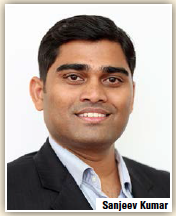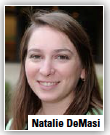High-value Specialty Medicines are Driving Growth in the Generics Market
Trending now: Emerging markets are the next big opportunity after the United States.
 Increased life expectancy, a growing older-population cohort, and the higher incidence of chronic lifestyle-related diseases are encouraging the use of generic pharmaceuticals as governments and healthcare service providers strive to contain costs.
Increased life expectancy, a growing older-population cohort, and the higher incidence of chronic lifestyle-related diseases are encouraging the use of generic pharmaceuticals as governments and healthcare service providers strive to contain costs.
Impending patent expiries of key drugs and a promising pipeline of next-gen high value-added biosimilars will sustain double-digit growth for generics.
On the flip side, increasing global competition, downward pricing pressure, and tightening regulations will challenge market participants. Further, professionals and patients often prefer branded drugs over generics. Using innovative production platforms to develop lower cost biosimilars as well as a premium priced portfolio can offer greater mileage to generics companies.
Recent analysis from Frost & Sullivan finds that generic drugs earned revenue of $330.87 billion in 2015, with a 37% share of the global pharmaceutical market. This is expected to reach $557.37 billion by the end of 2020. In fact, the generics segment is growing at a CAGR of 11% for this period, while the global pharmaceutical market is growing at a lower CAGR of 9.8%. By 2020, specialty and biosimilars will account for up to 70% share of generics.
“Patent expiration and increased usage of traditional generic drugs are curbing the cost of drugs, compelling the industry to invest in specialty medicines," says Frost & Sullivan transformational health industry manager Sanjeev Kumar. “With innovation and technology, generics can be enhanced to deliver additional benefits."
New Report Identifies Most Expensive Specialty Drugs
RGA Reinsurance Company, a subsidiary of Reinsurance Group of America, has released a report identifying 183 high-cost specialty drugs, defined as costing greater than $50,000 annually or $7,000 monthly, based on wholesale acquisition costs (WAC) of each product identified.
The most expensive drugs in annual cost include:
Ravicti, indicated for the treatment of urea cycle disorders ($793,632)
Lumizyme, indicated for the treatment of Pompe’s Disease ($626,400)
Carbaglu, indicated for hyperammonemia ($585,408)
Actimmune, for the treatment of severe, malignant osteopetrosis and chronic granulomatous disease ($572,292).
Half of U.S. Postmarketing Studies are Commitment Trials
 A new study published by Cutting Edge Information found that on average, just over half of all U.S. postmarketing studies are commitment studies as opposed to just 11% of other country-level teams’ studies. This trend is likely due to the increasing number of products that receive expedited approval in the United States is contingent on future postmarketing studies. From a global standpoint, 32% of postmarketing studies are commitment trials.
A new study published by Cutting Edge Information found that on average, just over half of all U.S. postmarketing studies are commitment studies as opposed to just 11% of other country-level teams’ studies. This trend is likely due to the increasing number of products that receive expedited approval in the United States is contingent on future postmarketing studies. From a global standpoint, 32% of postmarketing studies are commitment trials.
There are notable differences in the percentage of postmarketing studies that demonstrate cost-effectiveness. On average, one-tenth of global teams’ Phase IV studies have a primary goal of collecting health economics data, while 16% and 4% of country-level and U.S. teams do, respectively. Previous research conducted by Cutting Edge Information found that HEOR data is far more critical in the EU than in the United States, further supporting this data.
“Different regions may have different treatment practices, and patient populations vary based on subpopulation geographies," says Natalie DeMasi, research team leader at Cutting Edge Information. “Goals will also vary based on the product’s lifecycle, competition, and payer needs. However, postmarketing studies at the regional level will help companies gather local data critical for understanding regional prescribing patterns, patient adherence, and potential marketing extensions."
Regulatory Affairs Plays Increasingly Strategic Role
Regulatory professionals are spending more of their time on strategic activities and less time on tasks related to research and development, clinical testing, product registration, and other preapproval activities, according to a survey by The Regulatory Affairs Professionals Society (RAPS). Overall, compensation has increased, but more for those at mid-level positions, than those at senior levels, and those same mid-level professionals benefit most from having earned the Regulatory Affairs Certification (RAC).
Regulatory professionals’ compensation was found to be most affected by job level and several other related and interdependent factors, including regulatory experience, highest-earned degree, total professional experience and, for mid-level professionals, whether they have the RAC credential. RAC holders earn an average of 11% more in base salary than their peers without the RAC credential. For the first time since RAPS began conducting this research, regulatory experience was shown to have a greater impact on compensation than highest-earned academic degree.
Most regulatory professionals have multiregional or worldwide responsibilities, and work with multiple types of healthcare products. More than 88% of regulatory professionals began working in another field before transitioning into regulatory, and most have significant prior professional experience, usually in a related field.
More than 99% have a university degree, and more than 84% hold a degree in a clinical discipline, science, or engineering. More than 42% have a master’s degree, and more than 20% have a doctorate.
Global Bioinformatics Market to Grow
The global bioinformatics market is expected to grow at a CAGR of 15.5% between 2014 and 2020, reports Transparency Market Research in a new study. The market was valued at $10.04 billion in 2013 and is projected to reach $30.87 billion by the end of 2020. The drug development segment is anticipated to lead all application segments. North America is expected to maintain its dominance in the global bioinformatics market with a revenue of $11.92 billion by 2020. Asia Pacific is expected to witness the highest growth with a CAGR of 18.7% throughout the forecast period.
The implementation of expansion strategies to enhance market share will increase the intensity of competitive rivalry on the global level for the existing market players. To maintain their position in the global bioinformatics market, the large number of market players operating in the global bioinformatics market are investing in research and development projects. They are also looking forward towards technological advances for increasing application in biosciences and integrated information technology. The top three market players in the global bioinformatics are Affymetrix, Accelrys, and CLC bio. They together comprise about 34.6% of the overall global bioinformatics market in 2014. (PV)


















